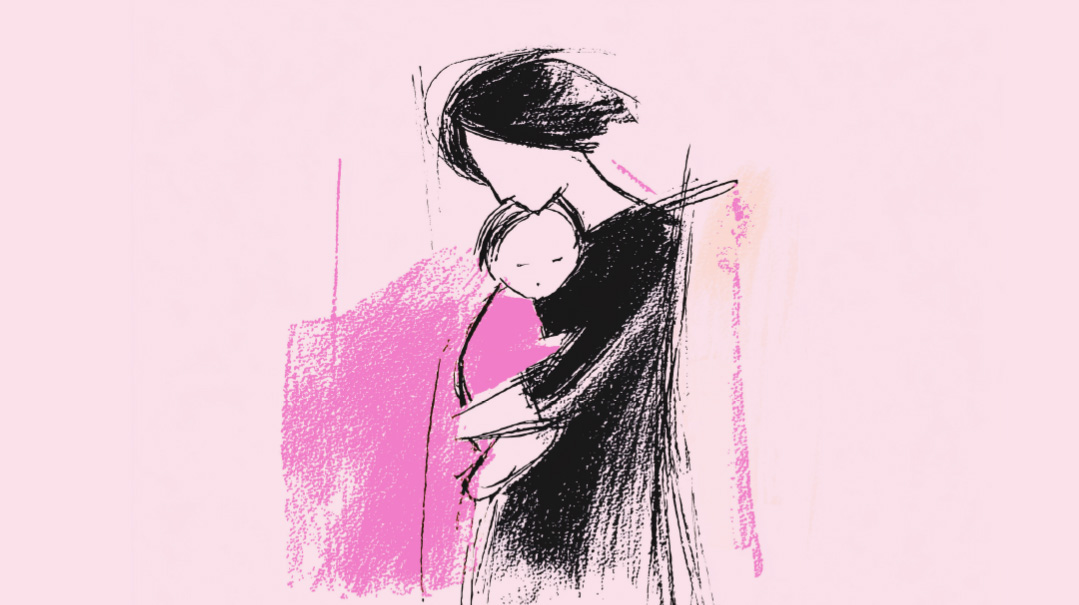By Choice

How to make decisions carefully, easily, and successfully

Think about your morning routine and see how you’re bombarded by myriad decisions that need to be made:
Should you eat Cheerios for breakfast or scramble yourself an egg? Should you drive to work or take the train?
A recent research study at Cornell University showed that people make 221 food-related decisions a day. Either that tells us we spend way too much time thinking about food, or, more likely, it reflects just how many moments of our day are taken up by choosing between options.
And what happens when it comes to big decisions? When the stakes are high, the options are numerous, the variables complicated? How do we not become overwhelmed then?
The good news is there are numerous strategies for improving our decision-making abilities and our satisfaction with the decisions we’ve already made.
Decisions, Decisions, Decisions
There are personalities who by nature find decision-making easy. But those individuals, says Dan Roberts, attorney and decision life coach, might not necessarily be the ones who make the wisest decisions. Their decision-making prowess may be a result of impulsivity — they have no problem making a decision, but may end up having a problem living with that decision.
“At one of my seminars,” Dan relates, “I asked the audience to share an example of a good decision or bad decision they’d made. One guy, a little rough around the edges, shared, ‘I was in prison with only six months to go. There were no guards around so I decided to go for it. Got me two more years.’ ”
Then there’s the type who seesaws back and forth between options and finds it hard to commit to anything. Often they suffer from what’s been termed outcome apprehension. They’re afraid to make a decision because it might not turn out the way they want it to.
“For example,” says Dan, “let’s say someone is considering a career as an aeronautical engineer. They’re afraid that after they put in all that effort, it won’t work out. Their dreams will be shattered. Sadly, the fear of that happening paralyzes them and they may never embark on the journey.”
“I’m very indecisive,” shares Toby, a middle-aged accountant from Brooklyn, “and so is my mother, and sadly, my daughter. Not only can’t I make decisions, when I finally do, I can never just leave it alone. I spend the rest of eternity regretting or questioning that decision.
“My mother talks things out and rehashes and rehashes and rehashes ad nauseam in attempt to come to a decision. Sometimes talking it out and verbalizing her options does help, but usually she just talks about it over and over and then pushes it off and never makes a final choice. She was supposed to replace her dining room floor three years ago, but every time she makes a decision, she backtracks.”
Having the trait of perfectionism can also cause decision-making to be difficult, says Rebbetzin Sarah Feldbrand, acclaimed author of many books, including F.A.I.T.H and Towards Meaningful Prayer. “This can happen,” she says, “with something as simple as trying to decide which laundry detergent to purchase, and getting stuck on feeling you have to make the perfect choice.”
Weighing the Options
When it comes to more complex decisions, experts agree that using a decision-making model to systematize the process is crucial. Dan breaks down the decision-making process into seven steps (see sidebar). He stresses to his clients the importance of getting out of their head and putting the information down on paper.
“Our brains are limited in their holding capacity,” he says. “An average person can hold only about seven pieces of information in his brain at a time. Let’s say you’re trying to decide what kind of car to buy. First there are all the models — Mazda, Chevy, Ford, etc. Then there’s the price you want to pay, the safety features, the color possibilities, the accessories.
“You might have five options for each criterion. That’s a lot of information. It’s impossible for anybody to juggle all that in their head.”
The same can happen when considering various career opportunities. “I’ll have him list the various important criteria,” says Dan, “such as income, opportunity for advancement, location, and benefits. Then I’ll ask him to grade each one of the criterion from one to ten, one being the most important and ten being the least.
“It could be that for one person the opportunity for advancement is more significant than the salary. This piece of information is crucial for him to know in order to make his best decision. But he might only realize that once he sees the numbers on paper.”
After following through the seven steps he suggests, Dan encourages his clients to do an intuition check to make sure their decision aligns with their values and feels okay to move forward with. “It’s important for an individual to know what her values are before making a significant decision, and to honor them,” says Dan. “When we’re in touch with our values, it’s easier to make the most appropriate decision for ourselves.”
Experts also agree that assuming it’s not an emergency situation, it’s wise to give ourselves time to work the process. In this way, we have a chance to reflect on our decision before implementing it.
Another necessary factor in making good decisions, says Barbara Weltman, founder of Big Ideas for Small Business, is getting feedback. “If you’re the primary or sole decision maker, your vision may be biased. Have others weigh in to help you see the bigger picture.”
Then there’s the spiritual factor to consider, especially when it comes to critical decisions like which school to send your child to or which community to move to. “It might be helpful,” suggests Rebbetzin Feldbrand, “to ask yourself the question, ‘After 120, would this choice be the one I would want mentioned in my eulogy?’ Or if for example, you can’t decide whether to go on that trip or not, try asking yourself, ‘Is this something I would choose to do if I had to tell my spiritual mentor about it the next day?’ ”
“Trusting in Hashem is key,” stresses Rebbetzin Feldbrand. “When people make a serious decision, such as whether or not to go ahead with a surgical procedure, or which doctor or medical facility they require, it’s important to strengthen their understanding that although they’re obligated to exert reasonable effort, a lot of details remain out of their control.
“We fulfill the mitzvah of hishtadlus collecting information, but ultimately, our Merciful Father guides our mind and hands. That thought alone should alleviate the tormenting burden of decision,” she maintains.
Rebbetzin Feldbrand also advises those faced with a decision that’s challenging to them, whether significant or trivial, to make a special request for Divine assistance during the blessing Chonein Hada’as in Shemoneh Esreh.
When it’s Hard to Leap
“Years ago, when I moved to my new home, I needed a living room couch,” shares Rina. “I didn’t trust myself to make the decision to purchase one that I really liked so I dragged my neighbor along with me. I figured since her house was perfectly furnished, there was no way I’d come home with the wrong couch.
“It’s 20 years later and I still hate the couch she encouraged me to buy. I didn’t like the color then and I still don’t like it now.”
People like Rina and Toby live in an agony of indecisiveness, plagued by self-doubt. They’re afraid to make a mistake. When it comes to decision-making, they often lose their sense of self.
“When I was expecting my first son,” shares Mindy, “I developed a searing headache and heart palpitations every time I needed to make a decision. My doctor told me to teach myself not to agonize. He said if I go shopping for clothing and can’t choose which item I want, either buy both items or walk out the door.
“It’s 50 years later, and I still use his advice. If it fits, I buy it. If I find myself vacillating, I stop myself short. No dillydallying. I just leave the store. Or buy both. In this way, I trained myself to make quick decisions in most aspects of my life and never look back. It would make me crazy if I would agonize over a decision.”
Esther, another person who finds making decisions difficult, shares what works for her: “This is what I advise people like me when they’re faced with a relatively minor decision. First, I ask them to be quiet and listen to the voices swirling in their head. Whose voice are they hearing? Is it their mother’s voice or their teacher’s voice saying, ‘You’ll never be able to make up your mind’ or ‘You can never do anything right’?
“Next I’ll have them close their eyes and imagine they live on an island all alone. By alone, I mean without the people who intimidate them. I then ask, ‘Now, what would be your decision?’ They will either say ‘I don’t care’ or answer what they’d choose, and so the huge monster of indecision in front of them automatically shrinks. They start to have more headspace to make decisions.”
“Also,” Esther continues, “what I’ve personally found helpful is first doing what I know must be done. For example, if it’s before a Yom Tov and I don’t know what fancy dishes to cook, first I’ll make what I know I will definitely need, like fish and chicken soup. Once my freezer starts filling up, I’m not so overwhelmed, and have more headspace to decide what side dishes I want to serve.
“I apply this to all areas of my life that require a lot of new decision-making. Before a wedding, I’ll shop for what I definitely need. Then as I see my to-do list shrinking, my overwhelm shrinks along with it and I have the headspace to decide what gown to buy.”
The Day After
The Chovos Halevavos teaches us that exercising reasonable effort is part of our service of G-d. That should influence our decision-making mindset. We’re going through the appropriate steps of decision-making because it’s the Will of G-d. The results, however, aren’t based on our decisions. They’re based on G-d’s decision of what is ultimately the best for us.
“The truth is,” shares Rebbetzin Feldbrand, “we may not know initially if our decision was wise. In fact, it may take a lifetime to figure it out. And for some decisions, we may never know until after 120. If the results bring more mitzvah opportunities and bring us closer to G-d, we’ve made the right decision.”
She also cautions against being too hasty to conclude that a decision was a wrong one. “Being homesick at your out-of-town seminary doesn’t necessarily mean you made the wrong decision. It may be your stepping stone to choosing to date a particular young man who ends up becoming your husband, based on the fact that he lives in your hometown and you won’t need to relocate.
“If the decision is reversible,” she says, “I try to help bring women to an understanding that if the decision turns out to be a mistake, they should consider their mistaken decision a learning experience and immediately move to plan B.”
Though many people judge their decisions based on the outcome, according to Dan, that’s not necessarily a fair indicator. Dan encourages his clients to divorce themselves from the outcome because, he says, the outcome is often largely influenced by things out of our control.
“For example,” he says, “investing in real estate before the 2008 downturn was a sound decision. Nobody could know what would happen. What’s important is the process you go through. If you’ve spent the time, thought the issues through, honored the decision that was made, then you can feel you’ve done your part. After that, whatever happens, happens.”
If it’s a business decision, Barbara notes that documenting everything can be helpful and may prevent future problems arising from pushback. “For example,” she shares, “say you make the decision to fire an employee who then sues you for discrimination or wrongful termination. Having the notes on the employee’s conduct, warnings to the employee, etc., can be helpful in having a good resolution to the lawsuit.”
So, chocolate or vanilla? Stay or leave? Decision-making need not be a source of major anxiety, even if you’re making life-altering decisions. With the right attitude and the right tools, sound decision-making can be approached in a relaxed manner. And after we’ve made the decision, the key is to relinquish control and let life unfold.
Seven-step process for making the right decision
- Frame the Decision — Determine (or confirm) the “real” problem you’re trying to solve. Sometimes a small decision you’re trying to make is really a reflection of a bigger dilemma you’re trying to solve. “A good way to get to the real issue,” Dan explains, “is to ask yourself: Why? For example, Joe is deciding which car to buy. He should ask himself, Why do I need a new car? I need a car that has good gas mileage. Why? Because I have a job offer, but it’s a long commute to get there. Why do you want that job? I need to save money. Why? I want to start college in the fall and need the money for tuition. Joe’s real issue isn’t which car to buy. Rather, it’s how to pay for college.”
- Set the Criteria — Determine what the outcome must look like for the decision to be successful. For instance, if an individual is looking into an accounting position, she needs to determine for herself what a successful choice means to her. Is it a certain income, benefits, hours, duties, opportunity for advancement?
- Gather the Facts — Decide what you need to know and obtain the information. Once an individual decides on the necessary criteria for his decision, he’ll need to go about doing the research and gathering as much information as he can.
- Develop Options — In most cases, Dan says, more options result in a better decision. So it’s a good idea to take the time to brainstorm as many options as you can. For instance, if you’re looking into career options, there are tens of possibilities. Our brain automatically stops after two or three possibilities, but Dan encourages his clients to keep on going. Mix and match. Be receptive to all possibilities. As long as it’s not immoral or illegal, jot it down. It may be a crazy idea, but sometimes it actually might make sense.
- Evaluate the Options — Compare options using appropriate decision tools and techniques. One such technique is grading the various criteria and coming up with a numerical score. One option will usually come out looking better than the other.
- Evaluate Risk — Determine the likelihood of success or failure for each option and your risk tolerance. Everybody’s risk tolerance is different so it’s important you know what’s tolerable for you.
- Go for it — Choose the best option and begin implementation. People are often reluctant to pull the trigger. “I tell my clients,” says Dan, “this is as good as it’s going to get. Go for it.”
(Originally featured in Family First, Issue 676)
Oops! We could not locate your form.







